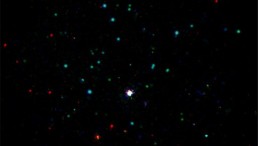Cancer chemotherapy requires destroying tumor cells without endangering their neighboring healthy cells. The holy grail in chemotherapy is to put biomarkers in tumors to attract these drugs to limit their side effects on healthy cells. Scientists have developed a hydrogel that decreases the side effects of drugs on healthy cells. Their findings were published in the journal ACS Central Science.
Researchers aim to focus chemotherapy drugs to be tumor-specific. Current processes involve attaching antibodies to proteins expressed on the surfaces of the cancer cells. The issue lies on the inefficiency of the drug administered to target the tumor site. Lead author Matthew Weber and his group utilized cucurbituril to target therapies to a tumor.
The pumpkin-shaped cucurbituril has the ability to gather other chemicals within its central cavity. Drugs at the tumor site could be retained through injecting cucurbituril near a tumor and attaching targeting chemicals to chemotherapy drugs. The tumors acidic environment would damage the link between the drug and the targeting chemicals in order to destroy cancer cells.
A mice was injected with a hydrogel that contains cucurbituril. The targeting molecule was tracked by putting a dye and then injection this into the bloodstream of the mice. The approach resulted to a 4. 2% injected dye in the hydrogel, which is better compare to other conventional methods. Most of the dye not connected to the hydrogel was released by the mice.
There was a slower growth in the tumors when the hydrogel adjacent to tumor xenografts were injected including the administration of the cancer drug doxorubicin to the targeting molecule. There were also fewer side effects compare to the unmodified cancer drug.
The hydrogel persisted in the mice's body for more than 45 days, which could allow repeated doses of chemotherapy drugs, or the use of different drugs with the same targeting molecule.














